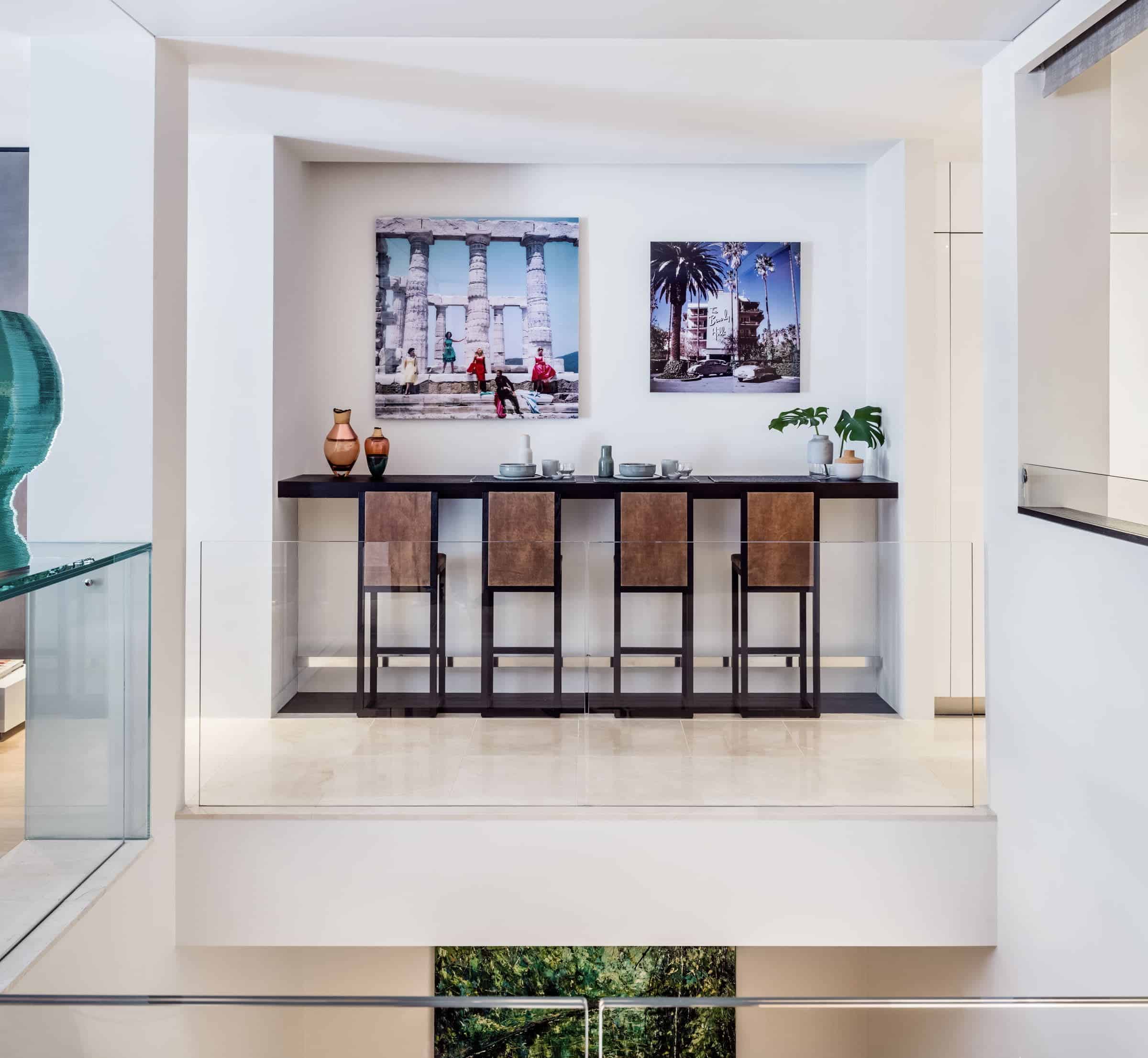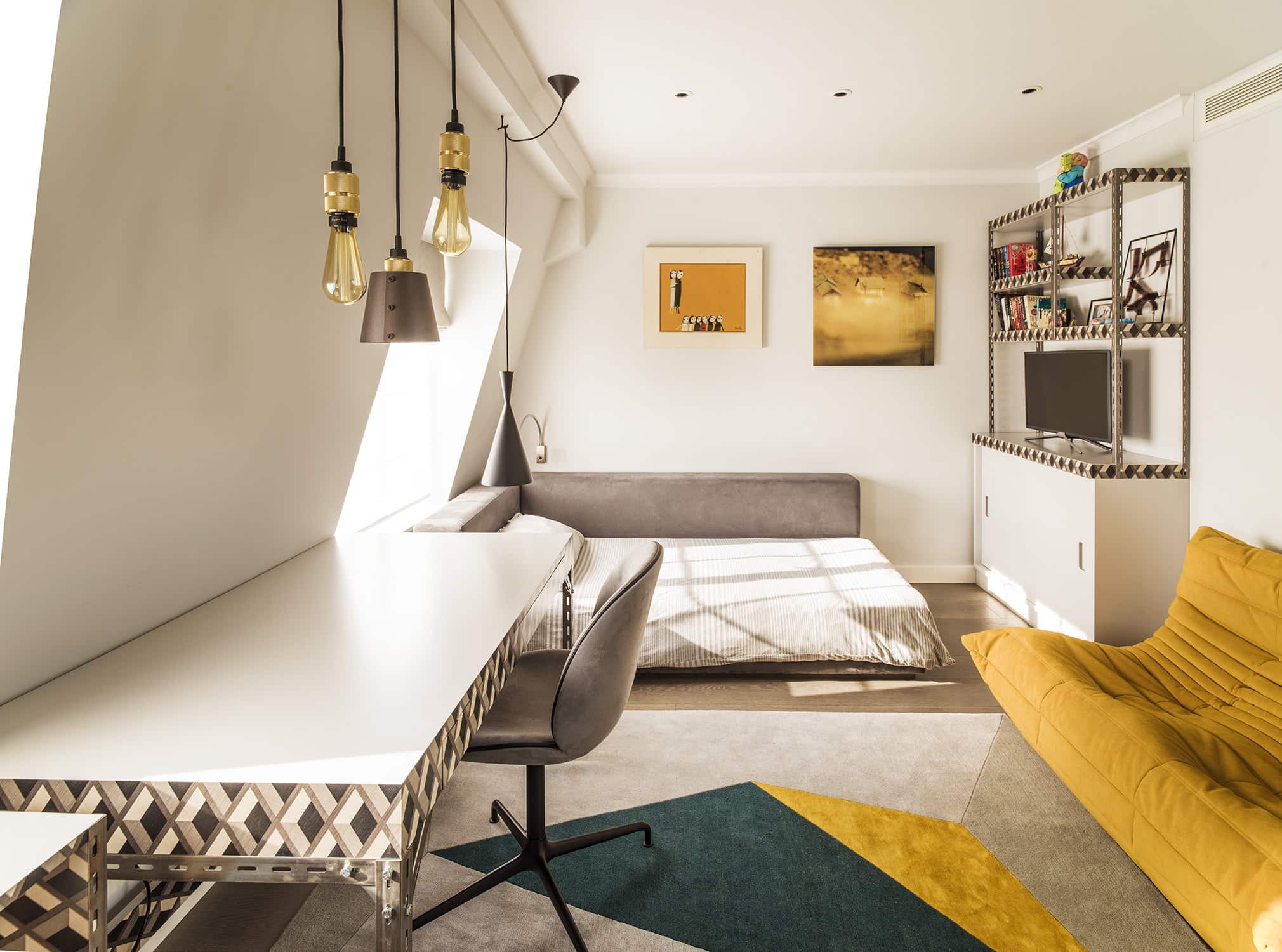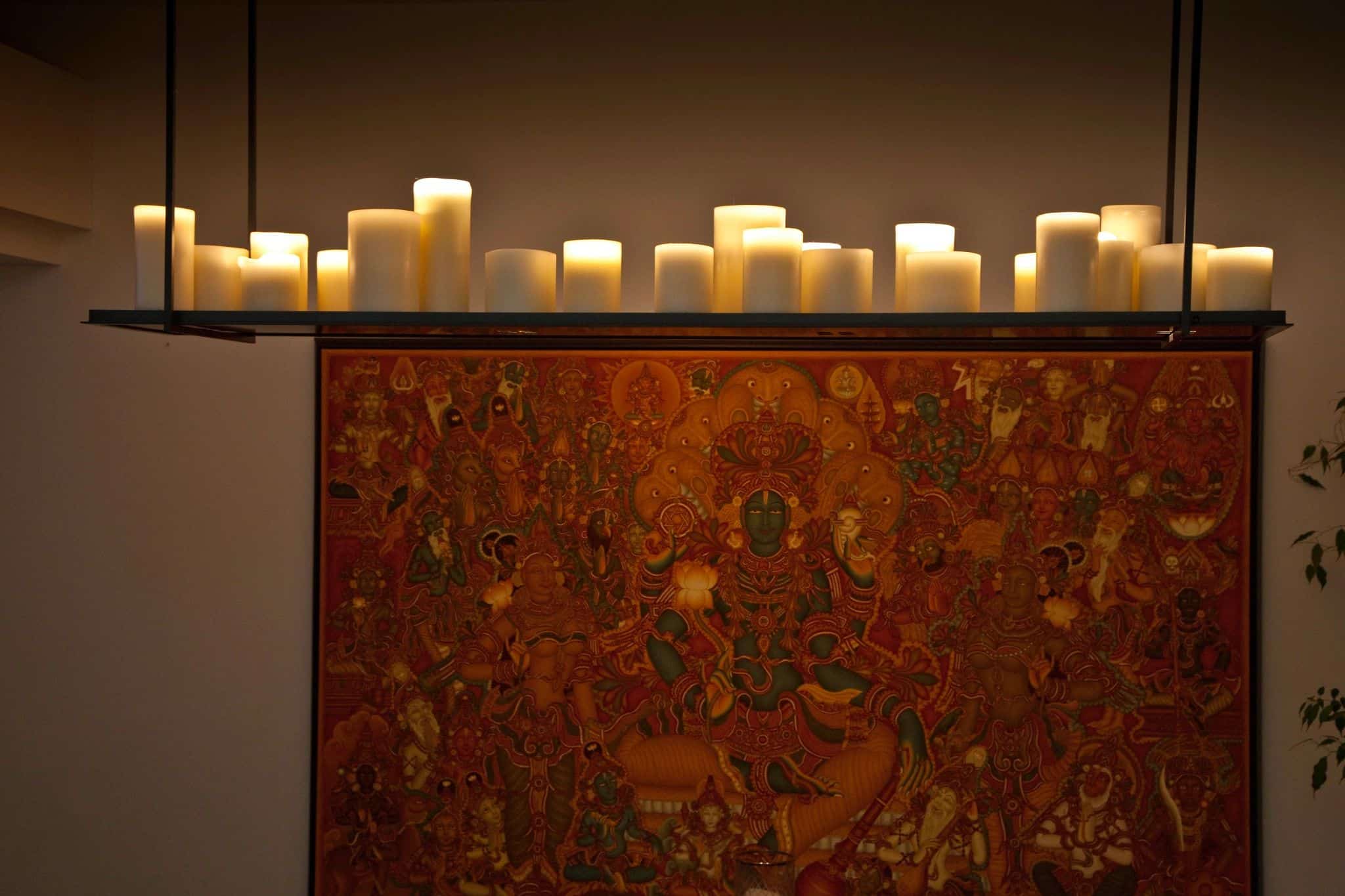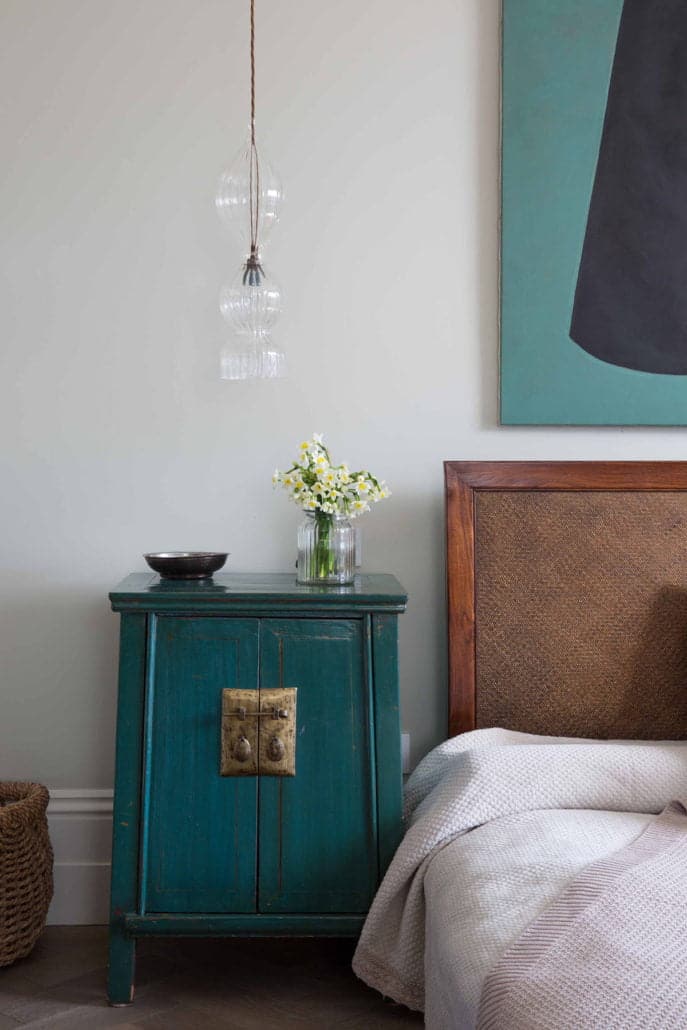Design The Perfect Entertainment Space
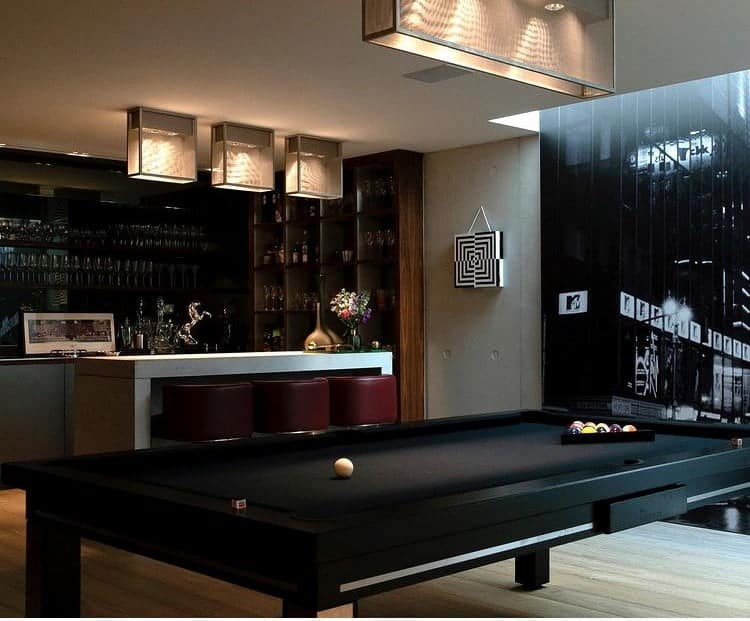
Your home is your sanctuary, which means it should fulfil all of your needs and provide you with an enriching environment. Designing a space for entertaining ensures that you have a dedicated place for escapism, fun, and relaxation.
Additionally, designating a particular area of your property as an entertainment space allows you to incorporate new design ideas and themes into your home. To get started, take a look at these top tips for designing the perfect entertainment space now:
Identify Your Entertainment Goals
Before you start planning your new space, think about what type of entertainment you enjoy and what type of events you plan on hosting. If you’re known for hosting elegant, formal dinners, for example, the dining room may be a core concept in your design. Alternatively, if you prefer more informal gatherings, you might want to create a relaxed and comfortable atmosphere elsewhere in your home.
Similarly, remember to differentiate between entertainment spaces you’re likely to use as a family or with close friends and spaces that are more suitable for larger events, such as parties. A home cinema can be a great option for families and small groups of guests, for example, whereas a home bar might be ideal for larger parties.
Designate a Space
Dedicating part of your home to entertainment is always worthwhile, so don’t hesitate to reserve part of the floorplan purely for fun. Of course, this can be tricky if every area of your home already serves a distinct purpose. If you’re designing a space for entertaining, a basement conversion and extension can be a fantastic option. Not only will you increase the square footage of your home, but you can also play a role in designing every element of the space you’re creating. With stairs leading directly from the basement area to your garden, you can even design an indoor-outdoor environment that’s perfect for entertaining.
If you want to use existing space for entertaining, consider which areas of your home you’re willing to share with guests and which spaces provide the best atmosphere. A roof terrace with a stunning view can be an ideal location for cocktail parties or drinks before dinner, for example.
Increase Fluidity
Even when an entertainment space is distinct from the rest of your home, it should never feel cut off or distant. By increasing fluidity, you can ensure that there is a natural transition between other areas of your property and your new entertainment space. You can achieve this by choosing a design and style that complements the existing interior of your home and using creating a balance between each part of your property.
If the more public areas of your home, such as the dining area, kitchen and living areas, are open-plan, it’s particularly important to ensure that new entertainment spaces enhance the fluidity of the environment, rather than diminish it.
Maximise Versatility
Entertainment trends change all of the time and there’s a good chance you’ll want to use your new space for more than just one type of event. To make this possible, focus on maximising versatility when you’re designing a space for entertaining.
Use large rugs on the floors ensures they can be moved easily and transferred to other areas within your home, for example. Similarly, portable lighting, such as floor standing or table lamps, can be transported from one area to another in seconds.
You’ll even find that some furniture designed for entertainment spaces is created with versatility in mind. Choosing a home bar that features hidden wheels or casters allows you to increase the functionality of your home and modify your entertainment space at any time.
Use Warm Hues
You want people to feel welcome, relaxed and at ease when they visit your home for entertainment purposes, so make sure you factor this into your decision-making when you’re designing a space for entertaining. Warm shades help to make a room feel more intimate, which is ideal when you want your guests to get to know one another. Furthermore, warm colours tend to convey excitement and even exuberance, which is exactly what you want to achieve when you’re creating a space for escapism and fun.
Incorporate Varied Seating
The right seating is integral when you’re creating an entertainment space, so be sure to consider this early on during the design stage. Ideally, you’ll want to incorporate varied seating options into the area, so that people can naturally gravitate to what suits them best. Sofas, chairs, and benches are ideal in an entertainment space, but stools and statement seating can work well too.
Although comfort should always be a top priority when you’re designing an entertainment space, think about the flow of traffic if you’re hosting larger events, such as parties. If you want guests to move through the space and get to know one another, choose seating that’s comfortable but that doesn’t entice people to stay in one place for too long.
Use Lighting to Create Ambience
Lighting is a core component of any room and it's particularly critical in an entertainment space. Subtle lighting wired into shelves or bookcases can increase the impact of your interior design and take a room from day to night, for example. By using a range of different options, such as lamps, wall lights and ceiling lights, you can create a layered effect that lends itself to any type of entertainment. Similarly, choosing lights that can be easily adjusted, such as dimmable bulbs, will give you total control over the atmosphere and ambience.
Enjoying Your New Entertainment Area
Once your entertainment space is complete, all that’s left to do is enjoy it! While it can take time to design the perfect space for entertaining, your hard work will be well worth it when you experience the end result. Whether you plan on hosting large-scale events or friends and family are a permanent fixture in your home, a bespoke entertainment space will provide all the fun and escapism you need.
5 Ideas To Make Your Home More Elegant
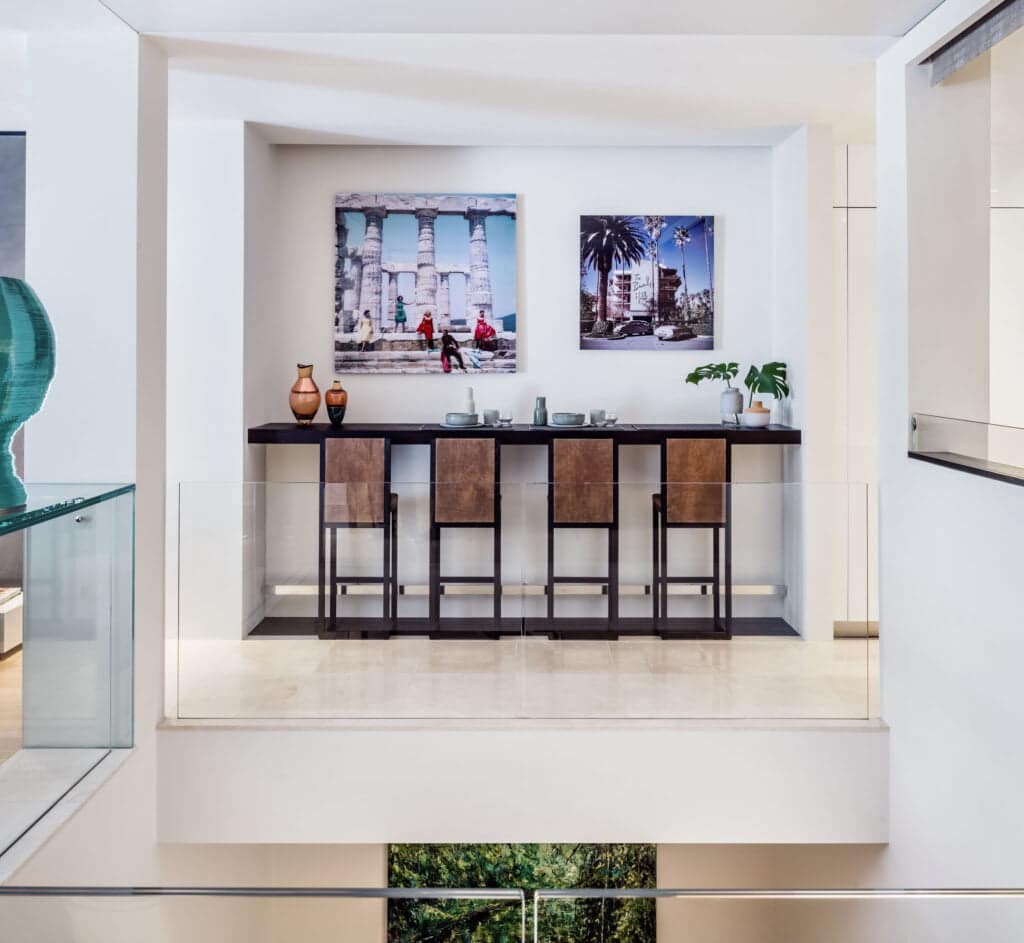
Image Credit: Cheyne Place
No matter what size or style your property is, you can create an elegant home environment that matches your style. As your haven away from the rest of the world, your home should make you feel safe and secure, but it should also be a place of freedom, creativity and relaxation. What’s more – your home should be a gift to yourself and something that represents your hard work and effort.
Before you can make your home feel more elegant, however, you’ll need to determine exactly what the term elegant means to you. By definition, an elegant home is stylish, sophisticated, charming and luxurious, but, of course, people interpret these characteristics in different ways. To get an idea of what this encompasses, take a look at these elegant home decor ideas:
1. Choose a Timeless Colour Palette
When it comes to colour, there are endless shades and hues to choose from. If you want to design an elegant home, however, selecting a timeless colour is always a good place to start. While on-trend shades can be used as accents, a classic colour palette will evoke a sense of chic sophistication that you want your home to embody.
While neutral colours can be a fantastic base in any room, don’t be afraid to experiment with bolder colours too. If you want to create a dramatic impact, for example, aubergine or dark grey walls can certainly deliver the effect you’re looking for. Alternatively, softer shades, such as mint or coral, can be ideal when you want a room to feel light and airy.
2. Use a Range of Textures
Many people mistake elegance for minimalism but the two aren’t necessarily intrinsically linked. While a minimalist interior design can certainly be elegant, you needn’t eschew decorative pieces and home comforts in order to transform your home into a charming living environment.
In fact, incorporating comfort and charm into your interior design can make your home feel more elegant than ever. Using a variety of textures will add depth to your designs, as well as making your home feel more welcoming and inviting.
A single room can feature multiple textures, depending on the materials you choose to use. A stone floor in a kitchen or hallway can be offset by softer colours on the walls, for example. Similarly, a comfy leather sofa that envelops you can combine unparalleled comfort with chic design. When you incorporate cushions and throws in different fabrics, it’s easy to see how a range of textures can take your interior design to the next level.
3. Enjoy Interesting Artwork
Incorporating art in your home will undoubtedly make it feel more elegant, but don’t stick to the status quo when you’re selecting paintings, prints, sculptures, or photography for your home. When you’re choosing which artwork to display, be sure to follow your heart and select the pieces you love. This will mean that your home is a reflection of your style and personality, as well as ensuring that you’re surrounded by art that you truly enjoy.
Remember – not all artwork needs to be hung on the wall. If you want to use art to elevate your interior design, think outside the box when you’re deciding how to display it. Leaning art against the wall or using it as a backdrop behind shelving can be an effective way to add variety to your design, for example.
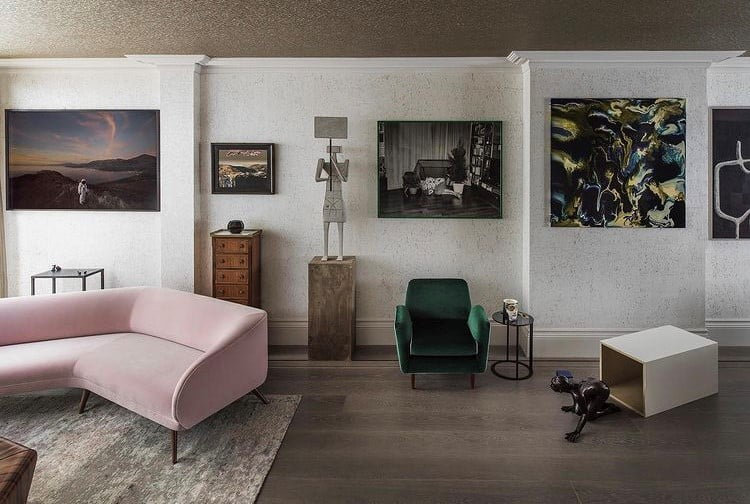
4. Make Lighting a Priority
An elegant home is always well-lit, so don’t overlook the importance of great lighting when you’re designing a room or redecorating an entire property. In fact, lighting is so important that it should be a central element of your interior design from the outset. While illumination obviously plays a functional role in any property, it also has a major impact on how a room looks and feels. Due to this, you can use lighting to create an elegant and sophisticated environment in every room.
Layered lighting works exceedingly well in a home environment, particularly in multi-purpose spaces. When you use a combination of ceiling lights, walls lights, and floor or table lamps, for example, you can modify the lighting at any time to create the perfect ambience. By choosing statement lights, you can also ensure that lamps and fixtures are in keeping with your preferred style and deliver an elegant silhouette.
5. Add Custom Features
Incorporating bespoke features into your home can increase the elegance of your interior and enable you to showcase your property at its best. With custom-made cabinetry in the kitchen, for example, you can increase the functionality of the space and establish a chic design that embodies sophistication and elegance. Additionally, bespoke crown moulding in living and dining rooms or wainscoting in the entranceway, hall or foyer is an easy yet highly effective way to make your home feel more elegant.
Of course, adding custom features to your home also ensures that your interior design will be totally unique. In an era of mass-produced furniture and popular design trends, this individuality should be cherished and treasured, so don’t hesitate to use custom-made craftsmanship, unique artisan décor and handmade decorative pieces to enhance your surroundings.
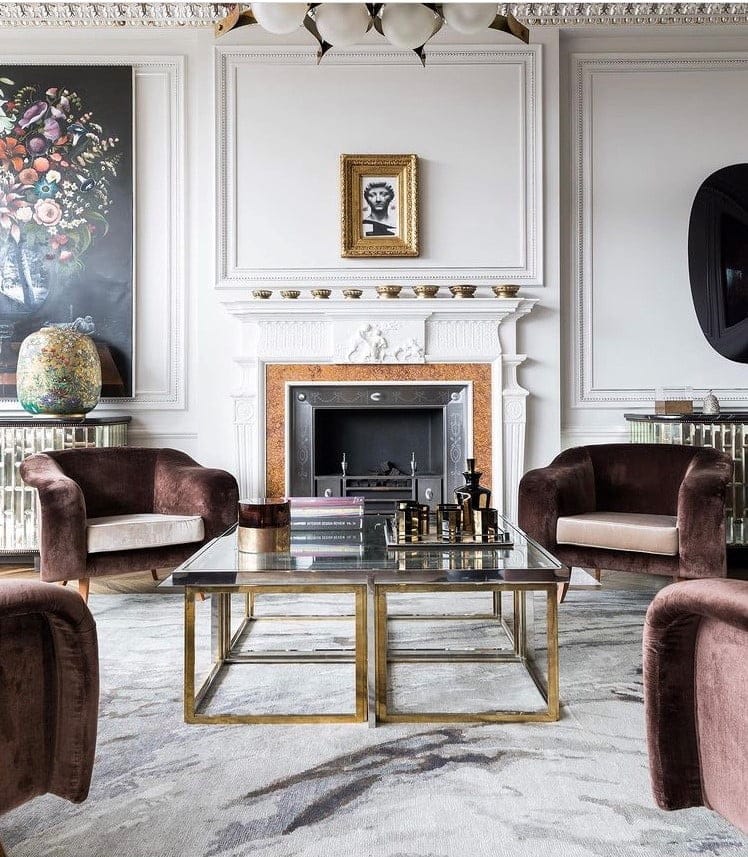
Designing an Elegant Home
When you’re renovating or redecorating your home, choosing interior design styles that can be carried through the entire property is one of the best ways to create an elegant living environment. While each room might have a distinct character, you can use interior design to ensure there is a seamless transition from one space to another.
It’s important to remember, however, that your home needs to be functional, as well as elegant. Whether you live alone, with a partner or with children, you’ll want to ensure that your living environment serves your needs and is easy to maintain. By incorporating these factors into your design choices, you can ensure that your elegant décor and sophisticated interiors will withstand the rigours of day-to-day life and create a chic home environment that inspires and envelops you.
Luxury Kids Bedroom
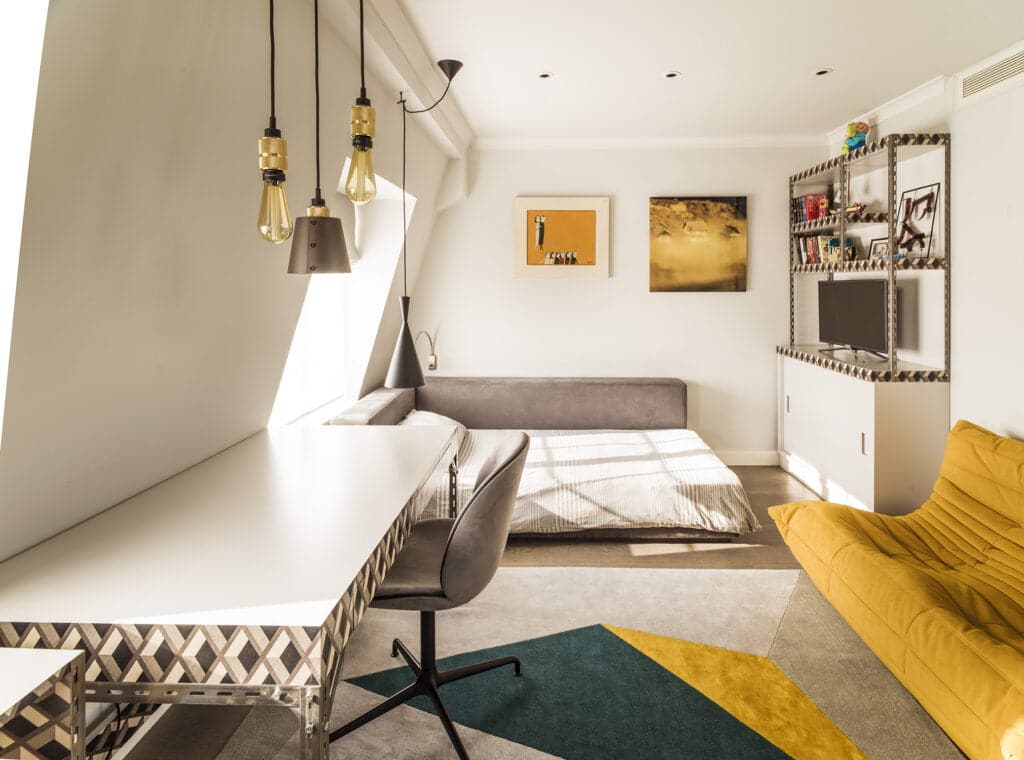
As a parent, there’s no doubt you’ll want to ensure your child has everything they need. By designing a luxury bedroom for them, you can establish a calming and tranquil environment that promotes relaxation while also creating an inspiring space that reflects their personality and potential.
Kids grow up alarmingly quickly, which is why it’s important to capture their imagination at every stage of their development. With the right styling, their bedroom can be a place of wonderment and joy, as well as a functional and versatile room. For inspiration, take a look at these top tips for designing a luxury kids’ bedroom and create the perfect place for your children to grow up in:
1. Use Colour Themes
When you’re designing a child’s room, it’s tempting to choose a theme that relates to their current interest or age. However, this typically puts a short time limit on how long your child will enjoy the décor. After all, kids regularly have new favourite animals or characters and often develop a wide range of interests as they get older.
By using a colour theme as the base for your design, you can ensure that your child’s luxury bedroom stands the test of time. Interests and hobbies can then be used to enhance the décor and updated at regular intervals. Not only does this keep the room and its design feeling fresh, but it also ensures that you can update your child’s room to reflect their changing interests and hobbies as they get older.
2. Make the Bed a Focal Point
As the bed is usually the largest piece of furniture in any bedroom, it naturally acts as a focal point. When it comes to designing a luxury kid’s room, you can really go to town and transform the bed into a statement piece of furniture and a central element of the interior design.
From fairy wonderlands with a canopy bed to an elevated bed with a built-in fort and slide, there are endless possibilities to consider. You’ll find many children’s beds that are pre-made in fun and exciting styles but if you want to create something bespoke, you can have a luxury bed built to your own specifications. This gives you the opportunity to unleash your creativity and produce something that adds the finish touches to your interior design and ensures your kid has a spectacular bedroom to enjoy.
3. Maximise Storage
No matter what age your child is, there’s a good chance they have more toys than you prepared for! Due to this, you’ll need to incorporate storage solutions into your bedroom designs to maximise functionality. This can be done in many ways, but built-in storage is often the best way to make the most of the space that’s available.
When you combine built-in storage solutions with freestanding options, such as drawers and toy chests, you can ensure that your child’s luxury room has sufficient storage space. As well as making sure the décor can be seen in its best light, this also enables you to keep the room clutter-free.
4. Bespoke Carpentry
Designing a luxury bedroom is significantly easier when you can incorporate bespoke solutions into your plans. Instead of relying on furniture with existing specifications, for example, you can have items custom-made to fit the room. Not only does this ensure that your child’s luxury bedroom will be totally unique, but it also allows you to showcase the property’s features and make the best use of the space that’s available.
In addition to this, high-quality craftsmanship really does stand the test of time, which is why bespoke carpentry and cabinetry is well worth investing in. While you might want to update the décor over time, having furniture custom-made and built-in will enable you to create a bedroom that evolves with your child as they grow.
5. Use Wall Décor to Keep the Floor Free
A child’s bedroom is often used for play, as well as for sleeping, which means you’ll want to enhance its versatility in as many ways as possible. When you maximise wall décor, you can create a stylish interior design while still leaving the floor space free to use as a play area.
Patterned wallpaper or artwork can be a fantastic way to enhance a child’s room, for example, and matching bedding and furniture will complete the design. Similarly, choosing a flooring that complements the design but promotes functionality will ensure your kid’s bedroom is easy to clean and maintain, as well as being stylish and luxurious.
6. Create a Separate Play Area
Even if your child has a separate playroom, there’s a good chance that they’ll use their bedroom as a play area too. While it’s great for youngsters to be able to use their imaginations and play with toys, a cluttered bedroom can disrupt night-time routines.
Kids need a calm and relaxing environment to promote high quality sleep in the same way that adults do. Of course, if toys are visible when you’re trying to settle your child at night, they’re likely to become distracted and want to stay up to play, rather than going to sleep.
Having sufficient storage space can go part way to solving this issue, as toys can be put away out of sight before bedtime rolls around. However, using a decorative room divider can also be an effective way of creating a separate play area within a luxury kid’s room. This will enable you to create a tranquil space for sleep and a more dynamic environment for play, without disrupting your child’s evening routine or affecting their sleep quality.
Designing a Bespoke Bedroom for Your Child
Children tend to spend an increasing amount of time in their room as they get older, which means it’s important to ensure that their room is inspiring, functional and soothing. When you use interior design to create a room that combines their interests with a calming colour palette and versatile features, you can transform the space into a luxury room that nurtures your child as they grow.
Holistic Meditation Spaces in Your Home
Meditation is a fabulous way to promote relaxation and well-being, which is why it’s worth creating your very own holistic meditation space in your home. When you have a dedicated space to meditate, it’s easier to make it part of your daily routine. Furthermore, having a tranquil environment in which to meditate can help to calm your mind and enhance the positive impact that meditation has.
If you want to create a personal sanctuary that you can enjoy at any time, or you’re eager to enhance the relaxing properties of your surroundings, take a look at these top tips for designing serene, holistic meditation spaces in your home:
Identify How Much Space You’ll Need
People like to practice meditation in different ways. Some prefer to sit cross-legged on the floor, whereas others find it more comfortable to use an upright chair or to lay down on the floor. If you’re new to meditating, remember that your preferences might change over time, so make sure you can adapt the space in the future. Once you’ve begun to think about how you would like to practice meditation, you’ll have a clearer idea of how much space you’ll need.
Dedicate a Space
Depending on the size of your home, you may wish to dedicate an entire room to meditation. While turning an empty room into a holistic meditation space is certainly a great use of your environment, you don’t have to devote an entire room to wellness. Instead, you can carve out space in an existing room and create a versatile environment that lends itself to tranquillity and calmness.
Ideally, you’ll want to choose a ‘low traffic’ area, that will allow you to meditate undisturbed. This might be a corner of your bedroom or space in a spare room. You can even turn a quiet part of your living area into a holistic meditation space if you wish.
Embrace Minimalistic Décor
The art of meditation involves clearing your mind and heightening your awareness, and minimalist décor can help you to achieve an innate sense of calmness. When you aren’t distracted by your surroundings, it can enhance your meditation practice and allow you to enter a deeper state of tranquillity.
Your surroundings have a significant impact on your mind, so be sure to clear the area before you begin thinking about what you’ll need in your meditation space. When you start from scratch, you can create a bespoke space that’s perfectly suited to the style of meditation you choose to practice.
Choose Soothing Colours
The colour of a room can evoke certain emotions. Bold reds and yellows are known to be energising, stimulating and motivating, for example. In contrast, blue is a soothing colour that calms the mind and promotes intellectual creativity, while green provides balance and harmony. Of course, neutral colours such as whites, greys and taupe, provide calm reassurance, which can be perfect for a holistic meditation space.
If you’re incorporating your meditation space into an existing room, you may not want to drastically change the décor. However, using decorative screens can be a great way to separate your meditation space from the rest of the environment. By doing so, you can use a distinct yet complementary colour palette that will promote relaxation without impacting on your core room design.
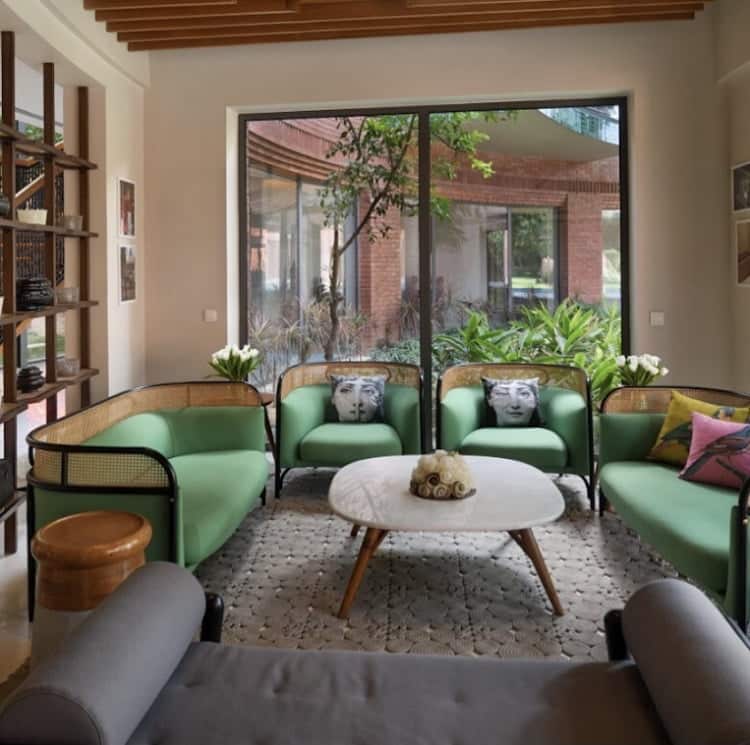
Add Soft Lighting
If you prefer to hear the sound of the great outdoors as you meditate, try and choose a space that’s close to a window. As well as giving you easy access to nature, you can allow the natural light to flow into your meditation space and use it to help clear your mind.
Alternatively, use soft lighting to illuminate the space. Candles work particularly well when you want to relax and unwind.
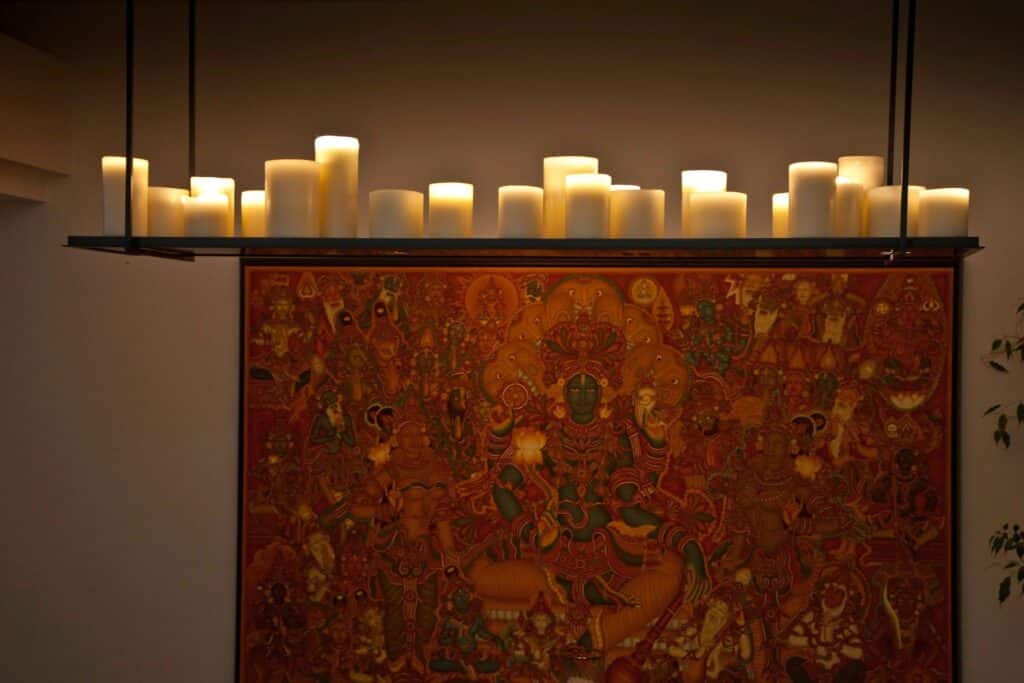
Prioritise Comfort
If you want to be able to meditate with ease and achieve a greater level of stillness, it’s important to ensure that your meditation space is comfortable. To achieve this, use soft furnishings, such as cushions, blankets and throws, to create a nurturing and reassuring environment. In addition to increasing your comfort, using different textures will awaken your senses and help you to focus on the present as you meditate. Where possible, choose natural materials, like linen, cotton or wool, as these will connect you to nature and help you to achieve a heightened state of awareness.
Incorporate Storage
You may not need much in the way of accessories to meditate effectively but many people use candles, crystals or essential oils to turn their attention inward and personalise their meditation space. Alternatively, you may use speakers to play soft music or the sounds of nature as you begin to meditate. If so, incorporating a small amount of storage into your meditation space can be a good way to minimise clutter and promote stillness.
Simple, stress-free storage options made from natural materials are ideal for a holistic meditation space, so look out for wooden or wicker baskets. Similarly, sea grass or bamboo storage baskets and bags can be a functional and aesthetically pleasing addition to your meditation space.
Be Flexible
There are no rights and wrongs when it comes to meditation, so don’t be too focused on creating a meditation space that ‘looks right’. Instead, be guided by your intuition and let your feelings take the reins. Personalising your meditation space gives you the opportunity to create a bespoke sanctuary that caters to your needs and enhances your awareness, so don’t hesitate to add décor or features that are meaningful to you.
Promoting Calmness and Tranquillity Throughout Your Home
Having a dedicated meditation space can certainly enhance your practice and encourage you to meditate regularly, but you can easily extend the design and style of your meditation space throughout your entire home. By doing so, you’ll create a calming, welcoming and tranquil environment that consistently enhances your well-being and reflects your unique personality.
How to Style a Run of Bookshelves
Bookshelves don’t just enhance your interior design; they offer functionality and versatility too. When you’re incorporating a run of shelves in a room, however, it takes some savvy styling to prevent the space taking on the appearance of a library or bookshop. Whether you’re redesigning your living space, overhauling your home office or even curating your own home library, take a look at these top tips for styling a run of bookshelves:
1. Think About How Much Space You’ll Need
If you’re going to install new shelving systems, you’ll want to ensure they’re tailored to your needs. After all, an overflowing bookcase is going to detract from your décor and do little to enhance your interior design.
Take a look at your current collection of books and estimate how much space you’re really going to need. To get an accurate idea, it can be helpful to measure a selection of books and multiply it based on how many books you own.
Remember – if you’re an avid reader or a collector, you’re likely to acquire more books in the future, so factor this into your plans. Furthermore, you’ll want to include a range of other pieces within your shelving system, so be sure to take this into account when you’re planning the space.
2. Reassess Your Interior
Once you know how much space you’re likely to need, you can begin deciding where to situate your bookshelves. You may already have a dedicated space, such as alcove shelving, or a blank wall you need to fill. If not, identify areas in your home that lend themselves to extra features.
Bookshelves can work well in home offices, living areas and even bedrooms, providing you’ve got the space and the room won’t feel cluttered. If you have a large number of books, don’t be afraid to split your collection and feature a run of bookshelves in different areas of your home. By doing so, you can maintain a cohesive design throughout the property, without overcrowding one room.
3. Choose the Right Material
Bookshelves come in an endless range of materials, which means they can be incorporated into any interior. What’s more – it’s easy to repurpose vintage pieces and use them as bespoke shelving units. Whether you’re creating a traditional, cottage-core feel or a contemporary, uber-modern living environment, choosing the right materials for your bookshelves will ensure that they fit seamlessly into your décor. From natural and reclaimed wood to metal, acrylic and glass, there are a wide variety of options to explore.
4. Complement Your Colour Palette
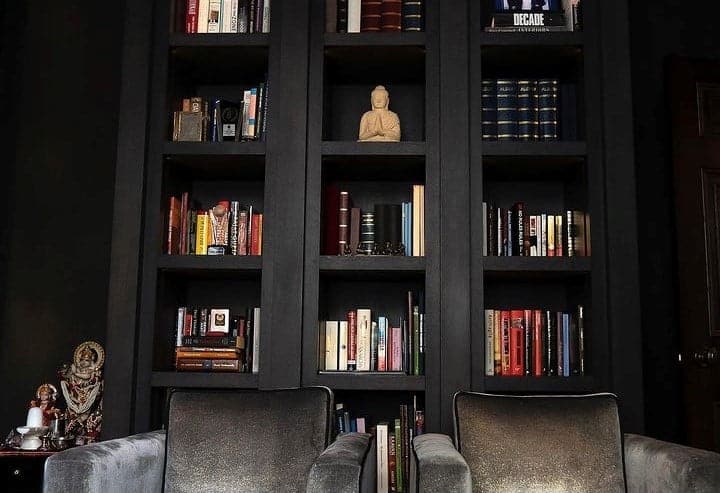
Credit: Shalini Misra - Deep rich charcoal paint on built in cabinetry adds both drama and depth to this home office in one of our recent completed projects.
Depending on the material you choose for your bookshelves, you may be able to modify the colour or finish yourself. This can be a great way to enhance existing shelving units or to upcycle vintage pieces that you want to use for display purposes.
The colour you choose for your bookshelves is going to have a major impact on how conspicuous they are, so think about whether you want them to be a feature in the room or if you want them to blend seamlessly into the background. By painting bookshelves in the same shade as the wall, for example, you can create an unobtrusive feature that doesn’t detract from your décor. Alternatively, a bold or vibrant colour turns your run of bookshelves into an aesthetic focal point.
When you’re selecting the colour of your bookshelves, bear in mind that the books and decorative pieces they’re going to hold will need to complement the shelves themselves. This may mean that choosing a neutral or minimalist shade is the best option. This gives you the flexibility to adorn your shelves with anything you choose, without having to worry about hues competing with one another.
Moody, dramatic shades can create a sense of intrigue and luxe sophistication and are the perfect foil for accent pieces in jewel shades and metallic finishes. Adding smoky and dramatic hues to a bookshelf or library unit bring an understated yet powerful aesthetic to the space.
5. Segment Your Books
For book lovers, segmenting your collection can be the trickiest part of styling a run of bookshelves, but it’s well worth the effort. Some people prefer to segment their books according to the colour of the covers, as this allows you to style your bookcases more easily. Alternatively, you may prefer to segment your books based on their size, so that books of a similar size can be grouped together. This helps to create clean lines once they’re placed on the shelves and enhances their aesthetic appeal.
6. Vary the Placement of Books
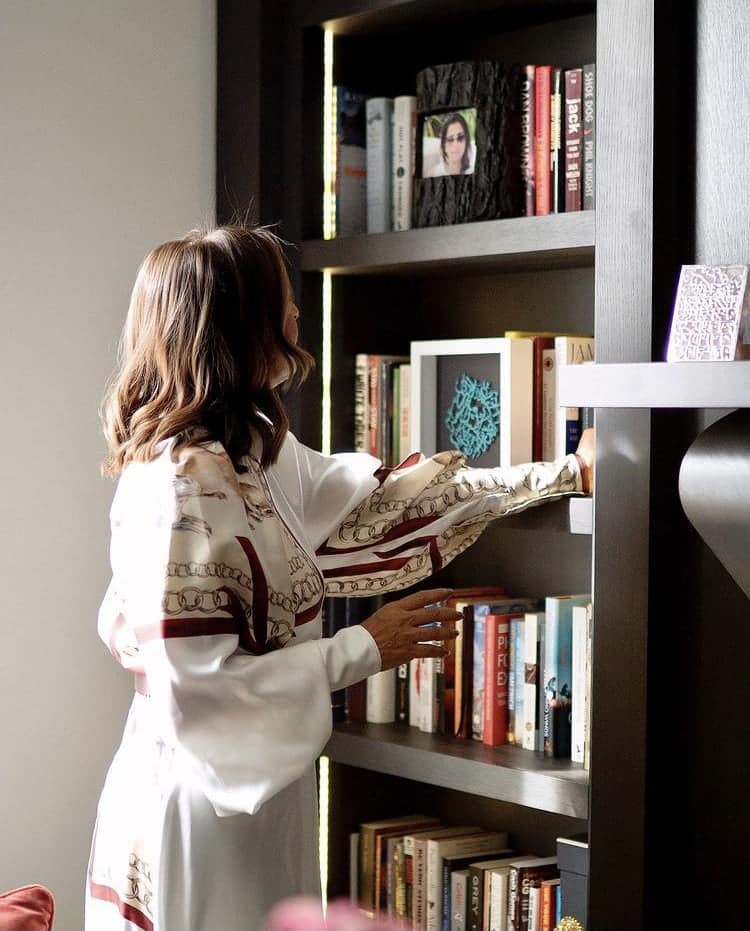
Credit: Shalini Misra
When you begin placing your books on shelves, don’t place them all in the same way. Instead, lay larger books horizontally, stand some books up and leave others leaning against them as a makeshift bookend. This allows you to add creativity into the styling of your bookshelves and prevents them from appearing bland in terms of their design.
7. Leave Blank Spaces
If you’re installing a run of bookshelves in a room, you won’t want to fill each shelf up with books. This can make the area seem too full and even cluttered. Instead, leave some space bare, so that each shelf looks well-styled and carefully thought-out, rather than simply being a storage area for books.
If you want to add an interesting focal point, use artwork in a blank space to complement the décor. You can either hang art behind the shelves and let it be visible or, if the shelves have backing, you can place it directly on the shelf or affix it to the backing.
8. Use Your Favourite Decorative Pieces
As well as using a run of bookshelves to store your favourite literary works, be sure to include your favourite decorative pieces too. Adding a vase, candle, vanity tray or sculpture helps to break up a run of books and adds new elements to your interior design.
Use Shelving to Enhance Your Interior Design
Shelving may serve a functional purpose in any home, but it can also be a key element of your design. When you take a creative approach to styling, a run of bookshelves can be the perfect addition to any room.
How to Style a Bedside Table like an Expert
A bedside table is a staple feature in any bedroom, so much so that it is often overlooked in terms of style. However, any piece of furniture plays an important role in the overall design of a room, which is why it’s essential to choose a bedside cabinet that elevates the theme of a bedroom.
If you’re looking for design inspiration or you simply want to know more about how top designers put the finishing touches to their work, read on to find out how the experts style their bedside cabinets and how you can incorporate their processes into your own redesigns:
1. Extend Your Colour Palette
It goes without saying that the bedside cabinets you choose should complement the style and colour palette of the room as a whole, but don’t stop there. The pieces you use to style your bedside table should be an extension of your chosen colour palette.
There’s no doubt that function is important when it comes to styling a bedside table, but versatility and function don’t have to come at the cost of style. If you want to illuminate the area with a bedside lamp, for example, choose one that uses materials that are present in other features of the room. Similarly, choose hues that are represented in other pieces to create a calming, cohesive environment.
2. Use Height
Using varying heights creates a dynamic and interesting design, rather than the somewhat flat and dull appearance that a single height line offers. Take a look above at how Shalini and her team used to inform the design of the master bedroom in the first London edition of Holiday House.
If you don’t have the space to incorporate multiple bedside tables, there are alternative ways you can use varying heights to alter the proportions and maximise the impact of your bedside cabinet. Adding a tall, elegant bedside table lamp, alongside a smaller vase and miniature alarm clock or bedside tray incorporates three different heights without overcrowding the space, for example.
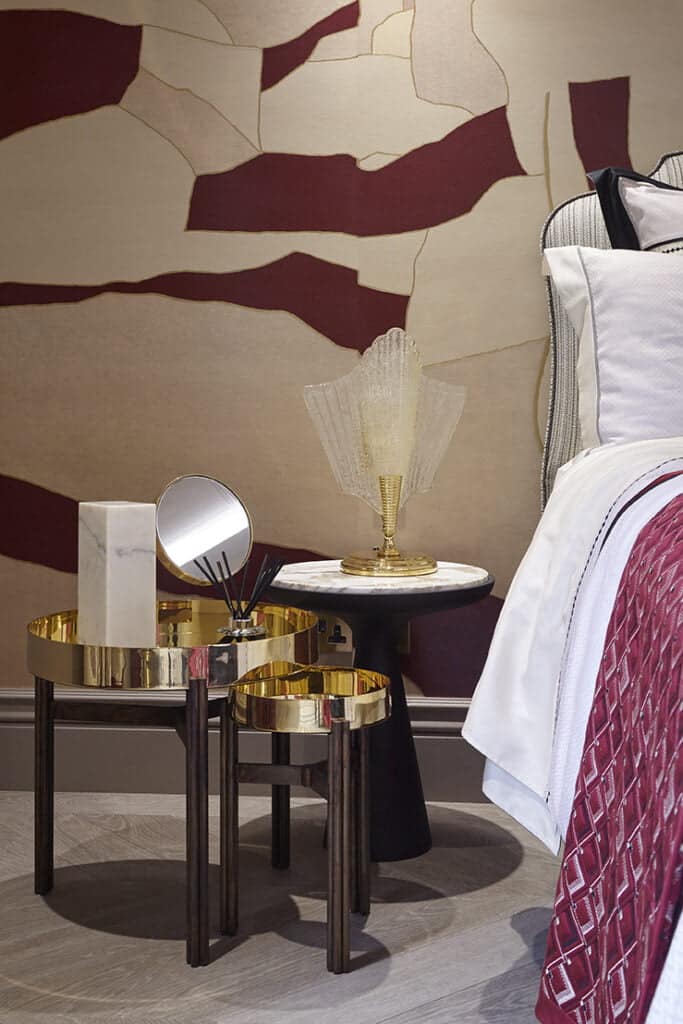
Image Credit - Shalini Misra
3. Add a Personal Touch
Your bedside cabinet may be the last thing you see at night and the first thing you see when you wake up in the morning. As a result, the pieces you choose to put on your bedside table can promote a restful night’s sleep and help to shape your mood for the day. Adding a personal touch to your bedside décor is one way of ensuring it has a positive impact.
Photographs of loved ones or beloved artwork can be ideal for a mid-size addition to your bedside cabinet, while a valet tray is a perfect place to keep sentimental trinkets or jewellery. Alternatively, position a vase filled with your favourite blooms or a luxury candle with your favourite scent on your bedside cabinet. All of these elements can be enhanced by choosing frames, materials and colours that complement your interior design while adding a unique and personal touch to your bedroom décor.
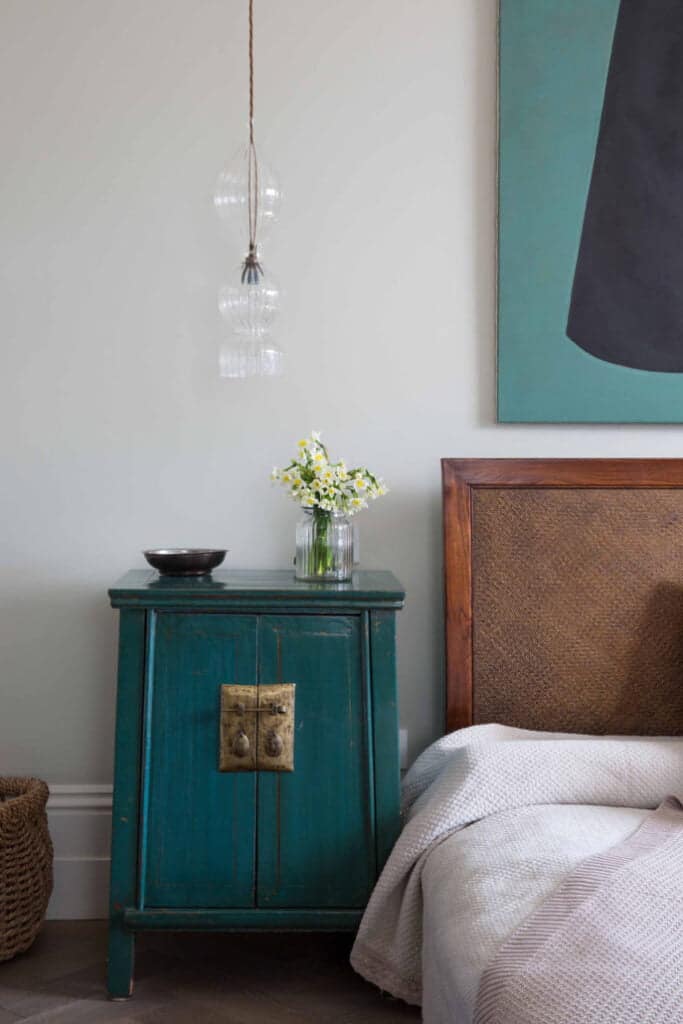
Image Credit - Shalini Misra
4. Keep It Simple
When it comes to styling your bedside cabinets, less is definitely more. It can be tempting to over-style a bedside table, particularly if you want to increase its functionality. However, crowding the space can detract from your carefully chosen design.
If you have a habit of filling your bedside table with books, phones, headphones, or other paraphernalia, choose a cabinet that provides extra storage while keeping items hidden out of sight. This ensures you have the space and functionality you need, without detracting from the design. The top of your cabinet can prioritise decorative pieces, while hidden storage provides the extra space you need.
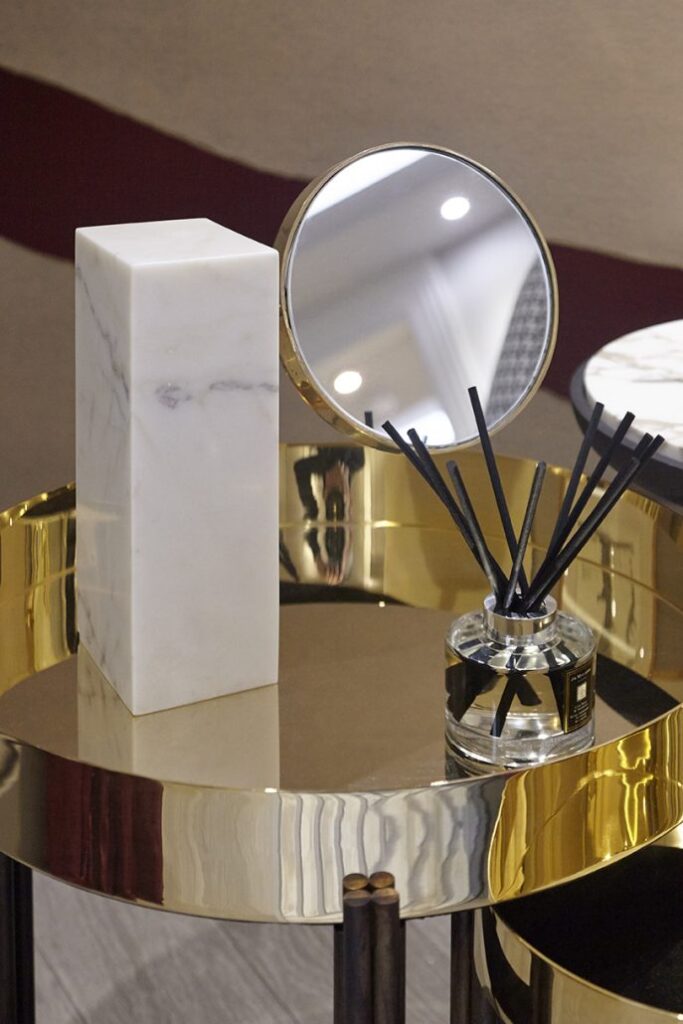
Image Credit - Shalini Misra
5. Use Subtle Symmetry
Styling two cabinets in the same way and placing them on either side of the bed can look spectacular but aiming for perfect symmetry may be unrealistic. Instead, focus on subtle symmetry when you’re styling bedside cabinets. Matching colours or accents achieve cohesive styling, for example, while using the same materials to enhance each cabinet ensures features will complement each other, as well as other pieces in the room. Similarly, using twin lamps or frames can be a great way to create ‘mirror image’ symmetry or can be used as the basis of subtle symmetry styling.
6. Add Depth
A bedside cabinet doesn’t have to be positioned directly against a wall. In fact, moving it away from the wall and using additional features to add depth can have a striking impact. If you’re opting for a bedside table that doesn’t feature extra storage, you can enhance the space by positioning artwork directly behind the table, for example.
An oversized piece that frames the table and its contents does double duty by adding height and depth to your interior design, for example. With complementing colour themes, this can be a spectacular way to achieve a bespoke look that’s understated yet impactful.
Alternatively, choose pieces that incorporate different textures and finishes to create more depth. A metallic bowl alongside a stone or ceramic lamp creates a fabulous aesthetic while using varying textures to increase the depth and effect of the design.
7. Soften the Space
Many people automatically choose bedside cabinets that are square or rectangular in shape, but these aren’t the only options out there. Choosing a circular bedside table or a cabinet with curved legs adds an interesting dimension and softens the space. Bedroom furniture is often angular, but this is one area where it’s easy to incorporate different shapes and silhouettes.
Add the Finishing Touches to Your Bedroom Design
The right styling can ensure that your bedside cabinets complete your room design but don’t overlook the challenges this area can bring. Often situated in a small space, bedside tables need to combine form and function to effectively fulfil their purpose and enhance your décor.
Due to this, you’ll want to think outside the box and be as creative as possible when styling your bedside cabinets. By doing so, you can ensure that your bedside tables are a central element of the space and add the ultimate finishing touches to your bedroom design.
How to Pick the Right Interior Designer

Whether you’re focusing on one room, your entire home, or a commercial project, it’s vital to pick the right interior designer who can inspire your creativity and bring your ideas to life. The materials, structure, and character of a property might provide a foundation to work with, but it’s the interior of any building that really brings it to life.
Choosing to hire an interior designer gives you the opportunity to truly make the most of your interior space. Unlike other professional services, however, you can’t select an interior designer based solely on their professional qualifications or experience. While these are undoubtedly important, finding the right interior designer requires a more nuanced approach.
To help you make the right choice and to streamline the selection process, take a look at these five important things to consider when choosing which interior designer to work with:
1. What to Expect from an Interior Designer
An interior designer can provide a variety of services. From redesigning your space and creating a new layout to selecting the materials, colours, and themes that will encapsulate each room, there are lots of possibilities to explore. You may want to give your designer a vague brief and free rein to transform the interior of your property, for example. Alternatively, you may prefer to work closely with your interior designer and be involved in every decision.
There’s no right or wrong way to work with a designer, but it’s important to ensure you’re both on the same page when it comes to working methods and expectations. Some designers prefer to work on projects where they can take the lead, while others are happy to bring a client’s vision to life. Being upfront and honest about exactly what you want your designer to deliver will help you to find the right person for the job. Furthermore, clarifying your expectations at the outset will facilitate a good working relationship and enhance the outcome of the project.
2. Previous Interior Design Work
Interior designers are adept at working with a range of styles to deliver an interior that meets the client’s needs and reflects their tastes. However, all designers have their own style too, so taking a look at their previous work can give you an idea of what to expect. If you’re a fan of their earlier projects, for example, it’s a good indication that you’ll be happy with the service they will provide.
Conversely, if you can’t find anything in their portfolio that you love, they’re probably not the right designer for you. Most designers will showcase at least some of their work on their website, so it’s easy to see what styles a designer is most noted for. By taking the time to look through a designer’s work, you can create a shortlist of potential professionals you’d like to work with on your own project.
3. Scale of Projects
Many designers are happy to work on projects of various sizes, from single room redesigns to whole property renovations. Of course, this isn’t the case for every designer, so you’ll want to ensure that your upcoming project matches the scope and scale of the projects they typically work on.
If you’re planning a single room redesign and you can only see whole property transformations on their website, don’t let this put you off. It’s always worth pitching a project to a designer, particularly if you like their previous work and the style of their interiors. The work showcased on their site will only be a fraction of their portfolio, so get in touch to determine whether they would be willing to undertake your project too.
4. Interior Design Budget
Establishing your budget before reaching out to interior designers is always a good idea. If you have a budget of £10,000 but a particular designer usually works on projects with a value of £1 million+, it might not be the right fit. While a meticulous redesign doesn’t necessarily require an unlimited budget, it is important that you and your designer are on the same page when it comes to the financial scope of a project.
No matter what your budget is, let prospective designers know in advance so that they can determine what services and options are most suited to your needs. This will ensure you can get the professional interior design expertise you require, as well as the best outcome for your property.
5. Deadlines
Top interior designers are in high demand, so there may be a waiting list for their services. If you have a particular timescale in mind, ask potential designers whether they can guarantee their availability in advance. If not, you’ll need to decide if you’re willing to adapt your schedule to match their availability or whether you’d prefer to work with someone else.
However, it isn’t only the designer’s schedule that you’ll need to consider. If you want to take a role in the decision-making process, rather than giving your designer ownership of the project, you will need to confirm your availability too.
If a one-of-a-kind piece becomes available, for example, your designer may need your input swiftly. Similarly, if a bespoke piece is being crafted according to your specifications, you may need to provide feedback partway through the process. Confirming your availability and average response times in advance will help to create a good working relationship with your designer and enable them to manage the project effectively.
Why It’s Worth Holding Out for the Right Designer
The right interior designer can transform your property and help you to create your dream surroundings. With an eye for detail and a talent for redefining interior space, your designer will elevate your home and create an interior that combines form and function.
However, the right designer will achieve this, as well as creating an interior that reflects your personality, tastes, and style. By taking the time to identify and understand your goals, the right interior designer will work with you to unleash your own creativity and use to shape an interior that’s tailormade for you.
Smart Homes Using AI to Enhance Our Everyday Life
Transforming your property into a smart home enhances your living environment and gives you complete control over every feature. While homeowners have been embracing smart home technology for some time, things are about to get a whole lot smarter.
The use of artificial intelligence (AI), combined with smart home technology, is set to revolutionise the way we live. From seamless property management to automated comfort settings, incorporating AI into your smart home can significantly enhance your everyday life. To get a glimpse of the features in store, take a look at how you can embrace AI and how it can improve your home:
1. Comfortable Temperatures and Energy Efficiency
Smart home functionality already allows you to control your thermostat from any location, while zoned heating and individual controls ensure you can adjust the temperature in different areas of your property. With artificial intelligence, however, smart home thermostats are able to use historical data to gauge how warm you like your home to be. Based on this, it will automatically adjust the settings, raise or lower the temperature, and turn your heating system on and off.
As well as guaranteeing your comfort, an AI-powered smart home thermostat allows increases the energy-efficiency of your home and minimises fuel consumption. If you want to embrace a more sustainable lifestyle, this is a great way to make your home greener.
2. Remote Food Prep
If the thought of returning home and having to prepare dinner each night doesn’t fill you with enthusiasm, you’ll be first in line to get a truly smart kitchen installed. The Internet of Things (IoT) enables everyday appliances to incorporate internet connectivity and wireless technology, which means every smart kitchen appliance you own could technically be controlled remotely.
As if cooking dinner while you’re still at work or preparing breakfast from your bed isn’t enough, AI is about to take things to the next level. With artificial intelligence, appliances can effectively ‘screen’ the internal temperatures of the food you’re cooking and adjust the cooking temperature accordingly, before turning the power off at the right time.
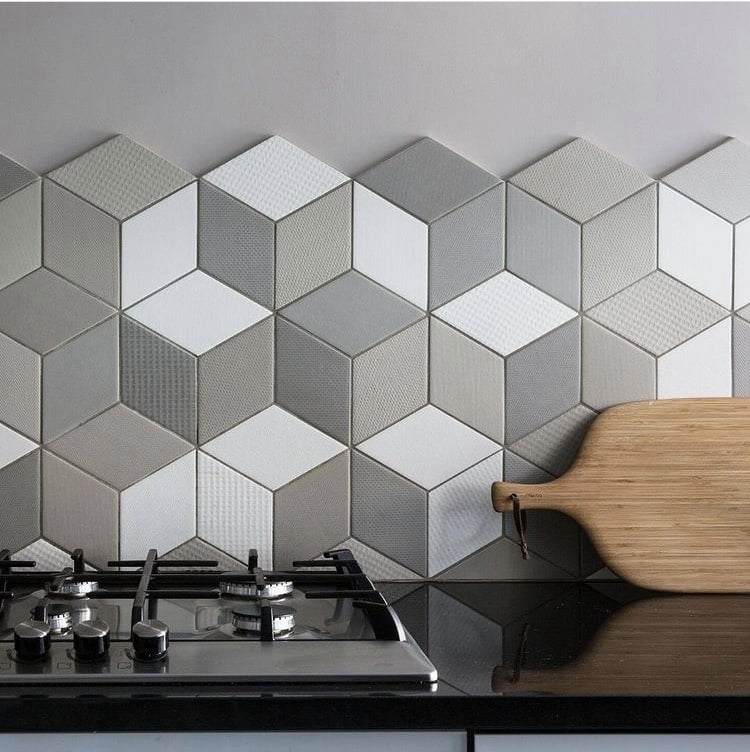
Credit: Shalini Misra
3. Bespoke Lighting Solutions
The right lighting has a major impact on your mood, productivity, and overall well-being, which is why it’s important to use layered lighting in your home. With AI-powered lighting systems, your overhead lights, lamps, and wall lights will automatically adjust based on external and internal factors. As it gets dark outside, your lights will automatically come on, for example. However, it doesn’t stop there. As the evening progresses, AI-lighting can gradually reduce the amount of blue light that’s emitted from screens to ensure you get a good night’s sleep or wake you up gradually with a lightbox on cold winter mornings.
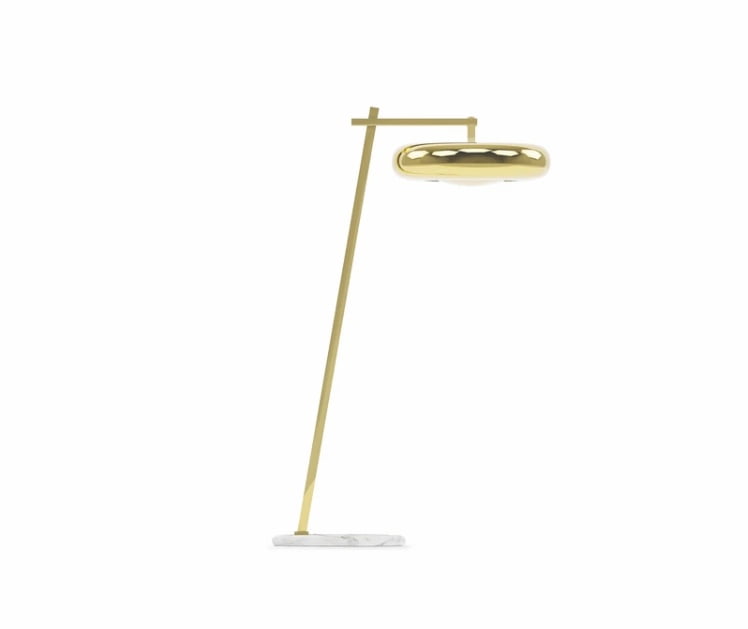
Credit: Royal Stranger Marshmallow Floor Lamp
Make Your Home Smarter
Incorporating AI-powered tech into your home will allow you to make the most of smart home technology and enhance your everyday life. From preparing meals to creating the perfect ambience for relaxed nights in, it’s time to make your home a little smarter.
Using the Pantone Colour of The Year 2021 In the Home
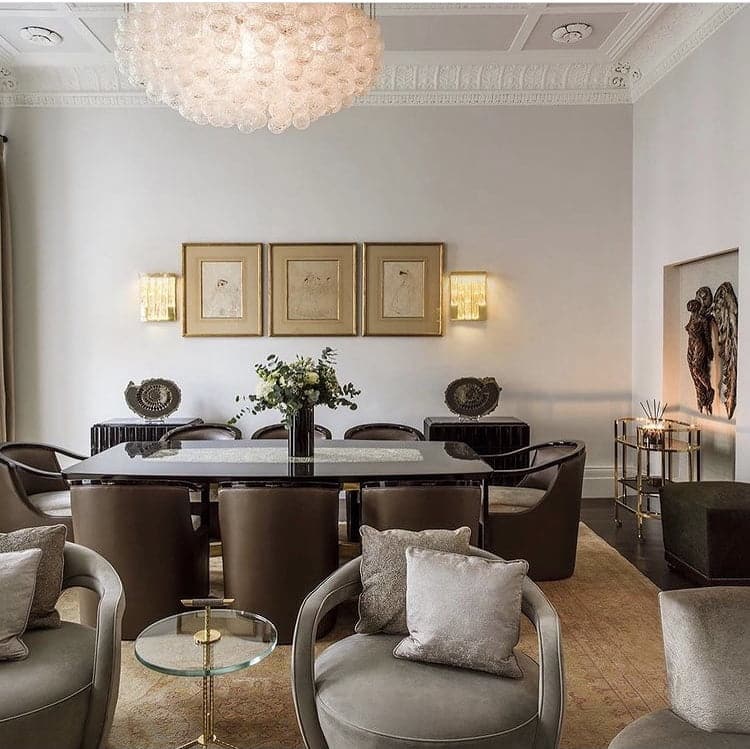
When you want to transform a room or give your home a new, fresh feel, the Pantone Colour of the Year is always a good place to start. In 2021, world-renowned colour institute, Pantone have defied convention to name two shades as their Colour of the Year: Illuminating and Ultimate Gray.
Identifiable as Pantone shades 13-0647 and 17-5104 respectively, zingy, Illuminating and the natural, reliable hues of Ultimate Gray provide the perfect base of your design choices in 2021. If you’re eager to incorporate these outstanding Colours of the Year into your home, take a look at these top tips now:
1. Home Office
Remote working has taken off in a big way over the last few months and it’s a trend that’s set to continue for the foreseeable future. In response, millions of people are creating bespoke home offices, which means the release of Pantone’s Colours of the Year comes at the perfect time.
If you’re looking for a motivating shade that will boost your productivity and optimism, look no further than Illuminating, a lovely warm egg-yolk yellow. When combined with the dependable elements of Ultimate Gray, it creates the perfect backdrop for any home office or study area.
2. Kitchen
Traditionally, homeowners have favoured bright colours in kitchens because they add light and vibrancy to typically small areas. However, the trend towards open-plan kitchen-diners and larger kitchens has encouraged people to think outside the box when it comes to kitchen design.
Fortunately, Pantone’s Colours of the Year work perfectly together to meld these two design themes. Ultimate Gray is the ideal shade to give walls, cupboards, and islands an enviable solid, matt finish, while the bold hue Illuminating adds a little sunshine.
3. Furnishings and Fabrics
With the right furnishings and fabrics, you can incorporate Pantone’s Colours of the Year into any – or every – room in your home. A chic sofa in subtle grey is a great addition to any living space while accompanying throws and cushions in Illuminating yellow will lift the shade and add a pop of colour to the space.
Similarly, you’ll see a wide range of wallpapers that incorporate both greys and yellows this year, so why not make the most of them? Bolder prints make the perfect statement wall, while more subtle hues can work well throughout the room.
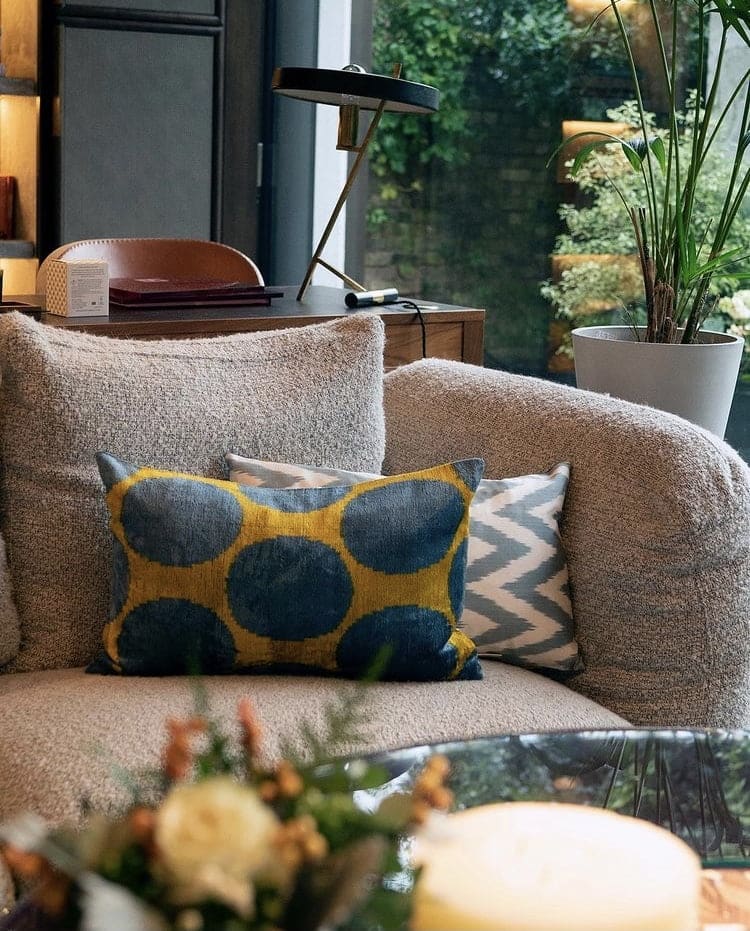
4. Bedroom
Your bedroom should be a zone of relaxation and tranquillity, but it also needs to uplift and motivate you every morning. To achieve these seemingly contrasting goals, use Ultimate Gray and Illuminating yellow to create a relaxing and reassuring haven that brightens your mood and boosts your energy. The reliability and dependability of Ultimate Gray is exactly what we need in these unusual times, while the power and energy of Illuminating yellow revitalises and re-energises.
Embrace Ultimate Gray and Illuminating Yellow Today
No matter how you choose to incorporate Pantone’s Colours of the Year into your home, you’ll be glad you did. Selected to represent clarity, energy, and hope, they’re the perfect shades to embody your home in 2021.
How to Entice Your Staff Back to Work

The COVID-19 pandemic has been an extremely stressful, worrying, and unpredictable time. With vaccinations being rolled out, life will slowly start returning to normal. However, many employers are worried that their staff won’t want to come back to the office. Some fear for their safety, while others are enjoying life at home. This has made returning to work a harder time than you may have originally thought. If you are unsure on ways to entice your staff back to work, then here is some useful advice that you should consider.
Invest in Air Purifiers for Your Office
Air purifiers are highly effective at removing ultra-fine particles from an indoor environment. This includes dust, mould, pollen, dander, and other common allergens. Evidence suggests that the right air purifiers may have the ability to capture viruses. Investing in air purifiers will reduce the risk of people catching and spreading COIVD-19 throughout the office, by reducing coughing and sneezing, and capturing the virus itself.
Accommodate for Social Distancing
Whether you run an office or a store, making an effort to accommodate for social distancing is crucial. The simplest way to do so is to rearrange the workspace and create clear routes and spacing throughout the store or office. If you can’t rearrange the workspace, then you should consider installing different screens between employees and customers. You should also provide everyone with the correct PPE and thoroughly clean the workspace regularly.
Use Standard Temperature Guns
Temperature guns can be an effective way to put people’s minds at ease. The demand for these tools has increased dramatically and they are used by many businesses. They can be used to detect a fever, which is one of the main signs of COVID-19. This will reduce the number of symptomless people entering the workspace. However, it is important to remember that this does not measure a person’s core body temperature because they are limited to the skin.
Keep Embracing Remote Working
If your company has managed to do so, you should continue to embrace remote working. This allows employees to remain productive in an environment that they feel comfortable and safe in. This is especially important for workers who are vulnerable or live with vulnerable people. You should also consider altering your sick day policy. Encouraging a schedule and office meetings can help ease your staff back into their work environment.
Show Your Staff that You Care
Showing your employees that you care about them and that you want to protect them will motivate them to come back to work. This is because it will make them feel safe and more secure in their work environment. Many people are worried for their future, safety and health, so you should use the principles to lead your staff back into a normal life and routine. This will rely on you doing your own research and alterations in the workplace.
Enticing your staff back into work is a tough task. Some people will be more concerned than others and will require more support and reassurance. However, with the right research and communication, you will be able to put their minds at ease.


